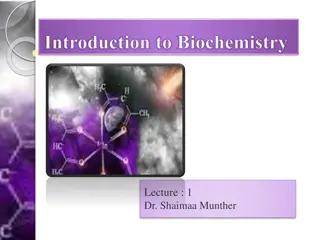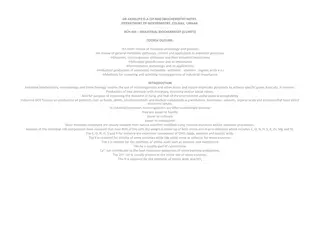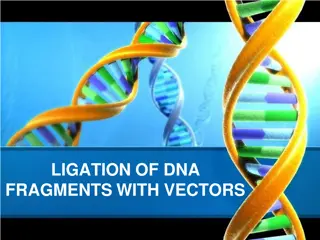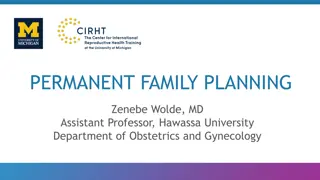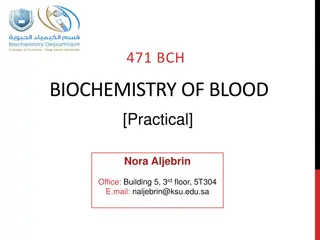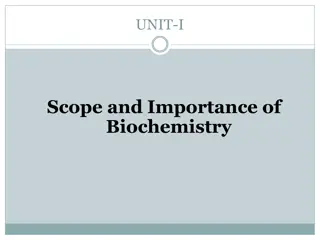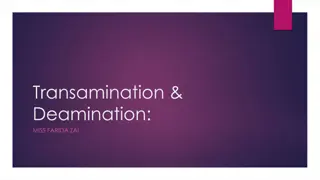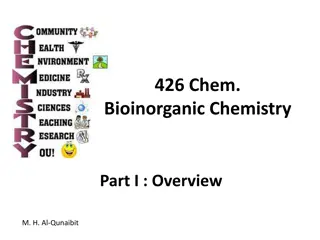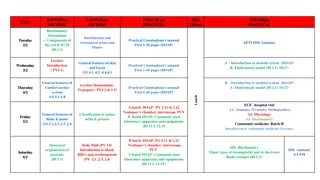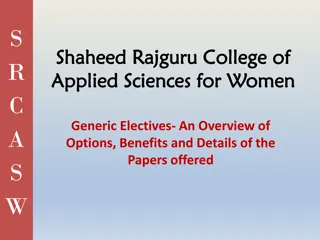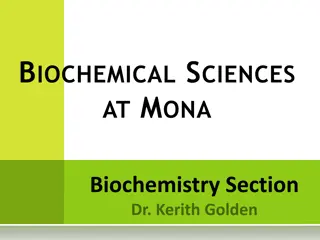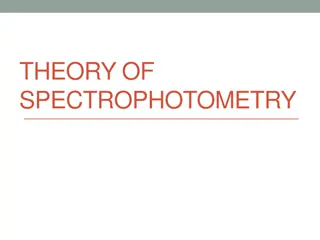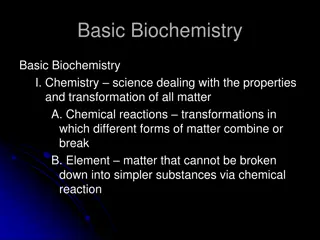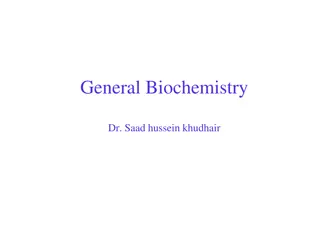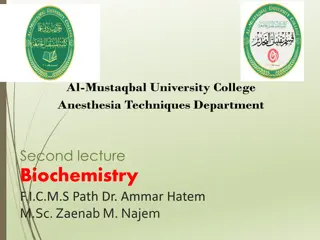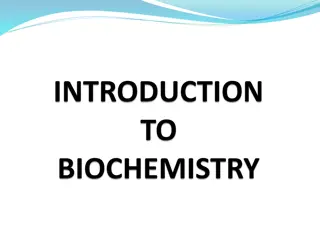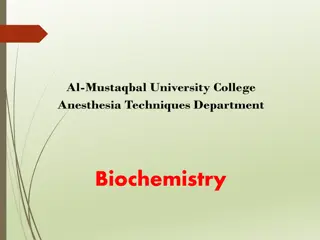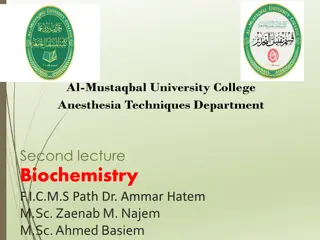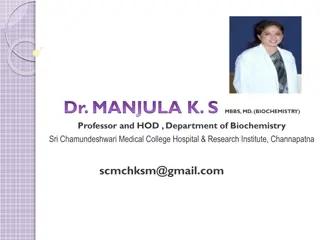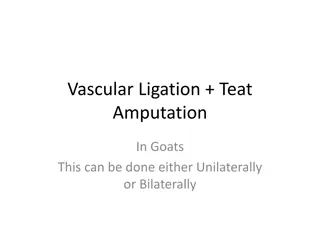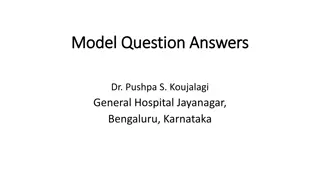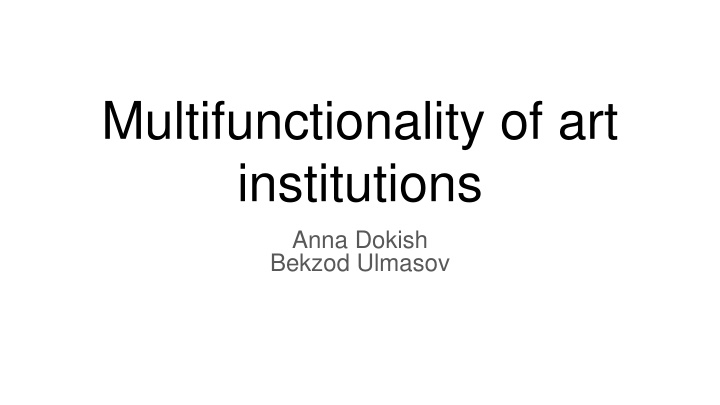
Chemical Ligation in Biochemistry
Chemical ligation is the process of binding molecules together through chemical reactions. It plays a crucial role in biochemistry for creating complex structures and functional materials. Explore the mechanisms and applications of chemical ligation with fluorenylmethoxycarbonyl chloride (Fmoc-Cl) and HOOBt/HOBt.
Download Presentation

Please find below an Image/Link to download the presentation.
The content on the website is provided AS IS for your information and personal use only. It may not be sold, licensed, or shared on other websites without obtaining consent from the author. If you encounter any issues during the download, it is possible that the publisher has removed the file from their server.
You are allowed to download the files provided on this website for personal or commercial use, subject to the condition that they are used lawfully. All files are the property of their respective owners.
The content on the website is provided AS IS for your information and personal use only. It may not be sold, licensed, or shared on other websites without obtaining consent from the author.
E N D
Presentation Transcript
Multifunctionality of art institutions Anna Dokish Bekzod Ulmasov
Topic Profits of space multifunctionality in examples of Tashkent and Saint- Petersburg institutions Innovative tactics in art institutions: implementation of virtual technologies as a case of multifunctionality implementation
Research question What are the differences and similarities in the perception of multifunctionality between theory and practice How this understanding varies between different business models How do representers of developed and developing museums consider the potential and benefit of multifunctionality How do visitors adopt to digital innovations in physical environment of art institutions?
Research motivation Common: Explore implementation of multifunctionality in art institutions, its process and results. Analysing the implementation of multifunctionality based on funding and ownership of institutions Comparative analysis of developing and developed art institutions Probe museums' minds to discover subconscious or latent reasons or goals implementation of multifunctionality Explore the potential of using virtual space to extend functions and employ innovations in space Explore how the concept of multifunctionality is experienced after its implementation by institutions and its visitors
Objectives Observe what relationships virtual space create with its users on the territory of art institutions Explore how the concept of multifunctionality is experienced by the objects of its implementation: institutions and its visitors Reveal the meaning of art institutional functions, prescribed by their visitors Explore the tactics of adaptation to the co-existing in virtual and physical space
Key concepts Multifunctionality - multifunctionality refers to "the possibility of having more than one activity or function in the same SPACE and / or at the same TIME" (Batti, Bessusi, 2019) Technological Innovations (Jung, 2017, Maximova, 2021) Visitor experience (Goulding, 2000) Business models in museums and art institutions - A business model is supposed to answer who your customer is, what value you can create/add for the customer and how you can do that at reasonable costs (Drucker, 2021).
Field/history of research Earliest research: Agricultural field (Casini, 2009) => Multifunctionality in urban studies (Bomans, 2010) => Space exploration => Distinct and abstract examples of space, not only rural/urban Multifunctionality in organizational models (Roth, 2018) Institutional analysis Multifunctionality of geographically-driven unions (land, communities) Suburbs: conflict of values () ! Little research on intersection: multifunctionality + art institutions ! Diversity in term (multifunctionality = creative use of space = exploitation of space)
Background research As a result, it begs the issue of how long the present art gallery business model will be viable for more young and smaller galleries. Consider existing alternatives, business methods, and digital technologies to see if there are any other paths to a viable business. Young galleries, for example, are more amenable to a collaborative approach when it comes to sharing booths at art fairs (Gallery Report, 2015/16, p. 21). As a result, it appears that newcomers to the market are more responsive to innovative approaches than established firms. (Davison Balduino, 2016) remarked that art galleries are now an integral element of a city's cultural life and play a key role in the growth of the art market. It demonstrates how a piece of art may aid in the economic development of a country. However, he claims that, in light of the current state of the art world, several art galleries are only making minimal profits in order to stay afloat. At the same time big institutions are afraid to take risks because of investments or reputational damage.
Background research: Space VS Place Internet as the third place (Mascheroni, 2007; Urry, 2002). Internet-facilitated software creates a new type of connections and networks, which sometimes is perceived more real than the actual geographical space. Transformation: Place -> Space (Easthope, 2009) Perception of place is shifted from being present physically to being present virtually (co-existence and conflicts of commands in this sphere create a new challenge for work ethics, for example)
Design of research Qualitative paradigm: semi-structured interviews with 1) institution representatives Two cities Tashkent and Saint Petersburg 139DC MOC Etaji Tsarskoye Selo 2) visitors (leitmotif semi-structured) + inclusive observation (on exhibitions) Recruiting: maximum diversity method (Palinkas et al., 2015) Analysis: open coding, axial coding, selective coding (Glaser & Strauss, 2017) 1. -> ( . ) 2. -> . 3. ? -> , , ( - , - )
References Bomans, K., Steenberghen, T., Dewaelheyns, V., Leinfelder, H., & Gulinck, H. (2010). Underrated transformations in the open space The case of an urbanized and multifunctional area. Landscape and urban planning, 94(3-4), 196-205. Casini, L., & Lombardi, G. V. (2009). Multifunctionality Concepts: A critical assessment of the framework approaches. In Rural Landscapes and Agricultural Policies in Europe (pp. 35-52). Springer, Berlin, Heidelberg. Easthope, H. (2009). Fixed identities in a mobile world? The relationship between mobility, place, and identity. Identities: Global studies in culture and power, 16(1), 61-82. Jung, T. H., & tom Dieck, M. C. (2017). Augmented reality, virtual reality and 3D printing for the co-creation of value for the visitor experience at cultural heritage places. Journal of Place Management and Development. Giovanna Mascheroni (2007): Global Nomads' Network and Mobile Sociality: Exploring New Media Uses on the Move, Information, Communication & Society, 10:4, 527-546 Goulding, C. (2000). The museum environment and the visitor experience. European Journal of marketing. Glaser, B. G., & Strauss, A. L. (2017). Discovery of grounded theory: Strategies for qualitative research. Routledge. Alisa Maximova. The Museum as a School of New Technology: Contemporary Interactive Exhibits and Their Users Practices, Studia Urbanica, 2021 Roth, S., Valentinov, V., Kaivo-Oja, J., & Dana, L. P. (2018). Multifunctional organisation models: a systems theoretical framework for new venture discovery and creation. Journal of Organizational Change Management. Urry, J. (2002). Mobility and proximity. Sociology, 36(2), 255-274.

